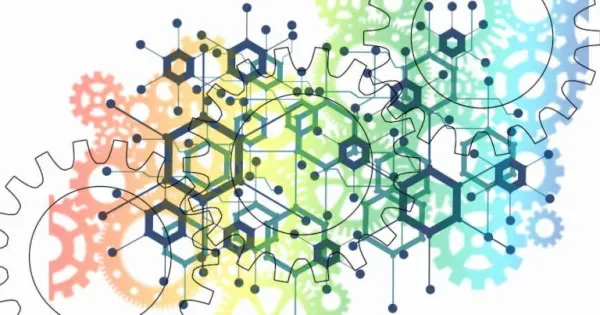
Digital currency has been one of the fundamental human inventions in recent years, which has been able to influence many human activities. Blockchain technology has been proposed globally by providing various applications, and cryptocurrencies based on this technology are traded daily by millions of people. In the meantime, the distributed ledger technology as the basis for the formation of the idea of Bitcoin, has not been introduced as it should be. Understanding DLT and how it works can help in better understanding the decentralized world and the performance of various tools developed in this field. In this post, I will comprehensively answer the question of what is a DLT distributed ledger and try to briefly examine the question of what are the types of DLT.
What is DLT ?
Distributed Ledger Technology (DLT) is a new and evolving approach to recording and sharing information in a database. In this new approach, each network user has a copy of the ledger and all ledgers maintain the same information. Network users, which are called "Nodes", are distributed as computer servers and cooperate from all over the world for network activity. Therefore, in answer to the question of what is DLT, we can say that DLT is a distributed database that has unique features.
Blockchain technology is one of the types of methods proposed in distributed ledger technology, which provides the possibility of recording and maintaining information in a distributed manner with its unique system. A deep understanding of the blockchain structure helps to understand the goals and structure of distributed ledger technology. In the blockchain, nodes, which are also called "miners", add new information to the ledger in the form of blocks containing transactions. After that, these blocks are distributed to the entire network as encrypted information, and in this way, transaction information is hidden from public view.
After a block is created by a node, other nodes check its information and approve or reject it according to the determined algorithmic methods. The predetermined algorithm for creating a valid block is known as the Consensus Algorithm. By confirming the information block by most of the nodes, the new block is added to the ledger by the nodes and all the ledgers are updated with new information. In this way, by connecting blocks to each other, blockchain is obtained, which is a successful example for distributed ledger technology.

What is the function of DLT distributed ledger?
The distributed ledger seeks to create a decentralized system where information is distributed among all users and there is a guarantee that any changes in the network are reflected in the entire network and all members share their distributed ledger in the same way. Update and have the same version of information. It can be said that the main function of the distributed ledger is related to the two issues of performing activities without the need for intermediaries and preventing "Double-Spend".
DLT-based systems or infrastructures operate the storage, recording, and transfer of digital information without the need for a centralized trusted system or information record keeping system, using globally distributed users. In addition, DLT eliminates the possibility of double spending digital currency tokens in the system. Double spending means sending a digital asset or cryptocurrency to multiple people. Without a central institution, the risk of double spending is very high because in decentralized systems, the transaction parties do not know each other, and therefore there is no personal trust. The distributed ledger has also solved this problem.
What is the importance of DLT?
The turning point of distributed ledger technology was the introduction of Bitcoin in 2008. Blockchain technology presented in Bitcoin attracted the attention of the general public with features such as resistance to information manipulation and safe storage of transaction records. The expansion of this field has happened so fast to date that it can be said that DLT has become an inseparable part of our world in this century. Only in 2018, startups active in this field were able to collect more than 4 billion dollars in capital, which shows the practicality of this idea.
To better understand distributed ledger technology, it can be considered as a "peer to peer" technology on the Internet. Therefore, DLT is similar to email, Internet telephony or file sharing services in this respect. However, these technologies have always had problems from the point of view of transferring ownership of assets and have not been fully provided in terms of security. Bitcoin as a peer-to-peer electronic payment system solved this problem in 2008 and announced itself as the first distributed ledger application.
The technology used in Bitcoin created special approaches to store information and transactions without the need for a central entity. Over time, countless new approaches and innovations have emerged for use in blockchain technology, resulting in a decentralized, trustless, and censorship-resistant system. The term DLT is a general term to refer to new technologies created to organize information and transactions for the transfer of digital assets on a peer-to-peer basis.
What are the advantages of DLT ?
So far we have understood what is distributed ledger and its importance. The traditional ledger is used to record and maintain transaction data and user information in different departments. This ledger is created by centralized systems and all steps, registration, confirmation, maintenance and updating of ledger information are done by this system.
Consolidation of power in the hands of central institutions, along with advantages, also has disadvantages, the idea of distributed ledger is presented to solve these problems. In the following, I will examine some different features in these two models that have created an advantage for DLT.
System security
Security problem is the biggest problem of traditional ledger. In this type of ledger, information is stored in centralized servers, and this issue increases the possibility of hacking the database and publishing user information. In addition, the target server may catch fire and all data will be lost. The centralized system itself has the ability to provide users' information to others. Due to its distributed nature, the distributed ledger has none of these problems and the security of the information is very high.
Cost
High cost is the second problem of traditional ledger. In this system, a centralized institution such as a bank is responsible for managing information and receives a fee for doing this. Different entities around the world need more intermediary layers to communicate with each other, and this problem has made the cost of registering international transactions very high. Distributed ledger technology greatly reduces the cost of recording transactions and information in the system by eliminating the intermediary entity.
Data recording speed
The third problem of the traditional ledger is its low speed in recording and confirming transactions. The existence of intermediate institutions brings the transaction registration cycle into administrative and government bureaucracy. This issue is more complicated for international transactions, and in general, with the addition of different intermediary layers, the speed of registering transactions also decreases. For a distributed ledger, there is no difference between transactions, and the network can record all types of transactions as quickly as possible. This is an important and great advantage for distributed ledger technology.
Information transparency and privacy
The fourth advantage of the distributed ledger compared to the centralized system is the transparency of its transaction information compared to the centralized systems, along with preserving the privacy of users. In centralized systems, user authentication is done by central institutions and the information is available to these institutions, and other users do not know about other people's transaction information. This issue provides the way for misuse of users' information.
In the distributed ledger system, there is no need to authenticate users, and users can connect to the distributed ledger by creating a pair of public and private keys. The information of all transactions is available to the public and the information is transparent for everyone. In the distributed ledger, due to the fact that there is no authentication, users' privacy is preserved while being transparent.

Censorship of users
The traditional ledger is at the disposal of the centralized organizational and government body. This institution is the undisputed power of this system and all user activities are approved or rejected by this institution. Many of these institutions do not allow all users to use the ledger. Some information is also censored by these institutions. In the public distributed ledger, all users are able to operate in the network within the framework of the defined protocol, and no one can decide the presence or absence of other users in the system.
